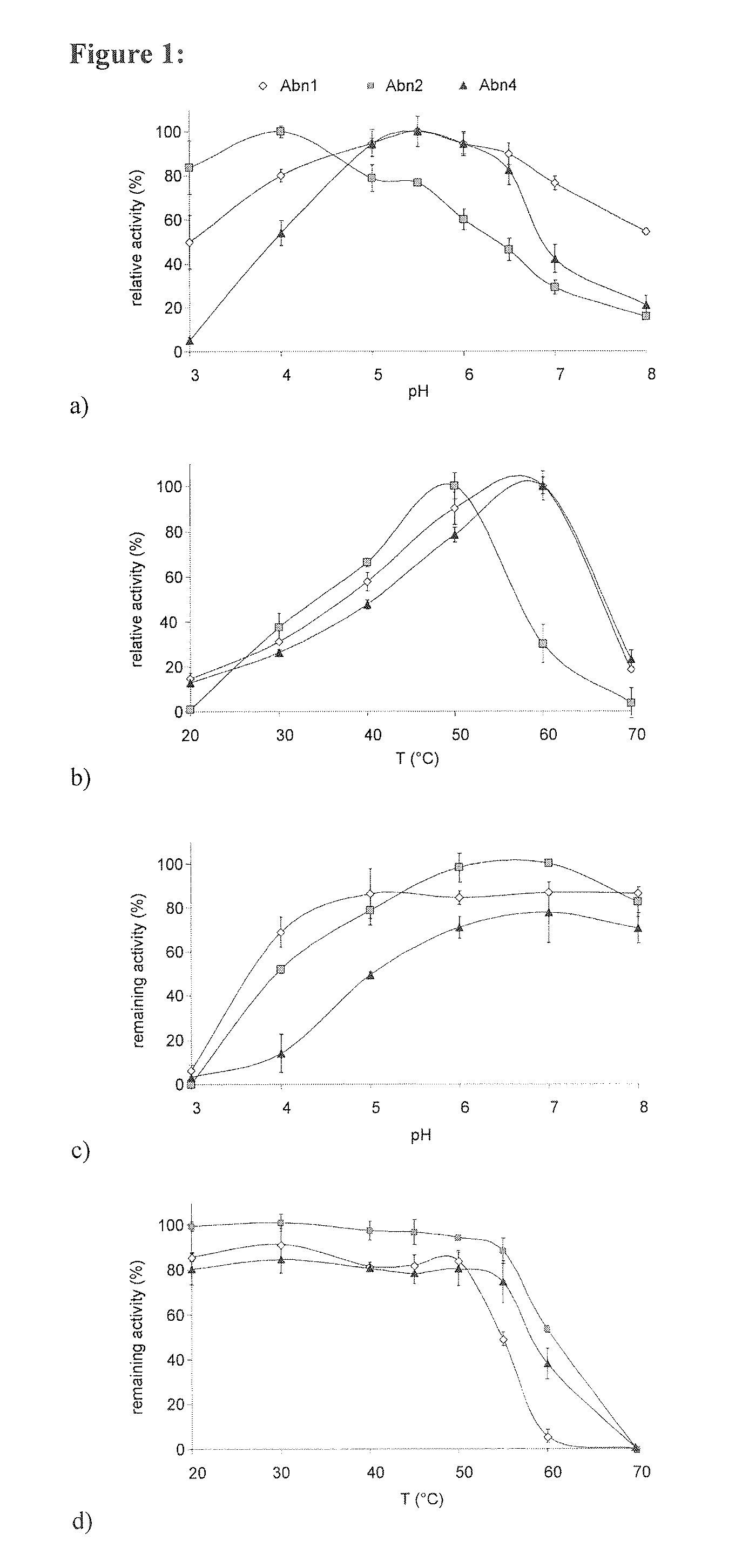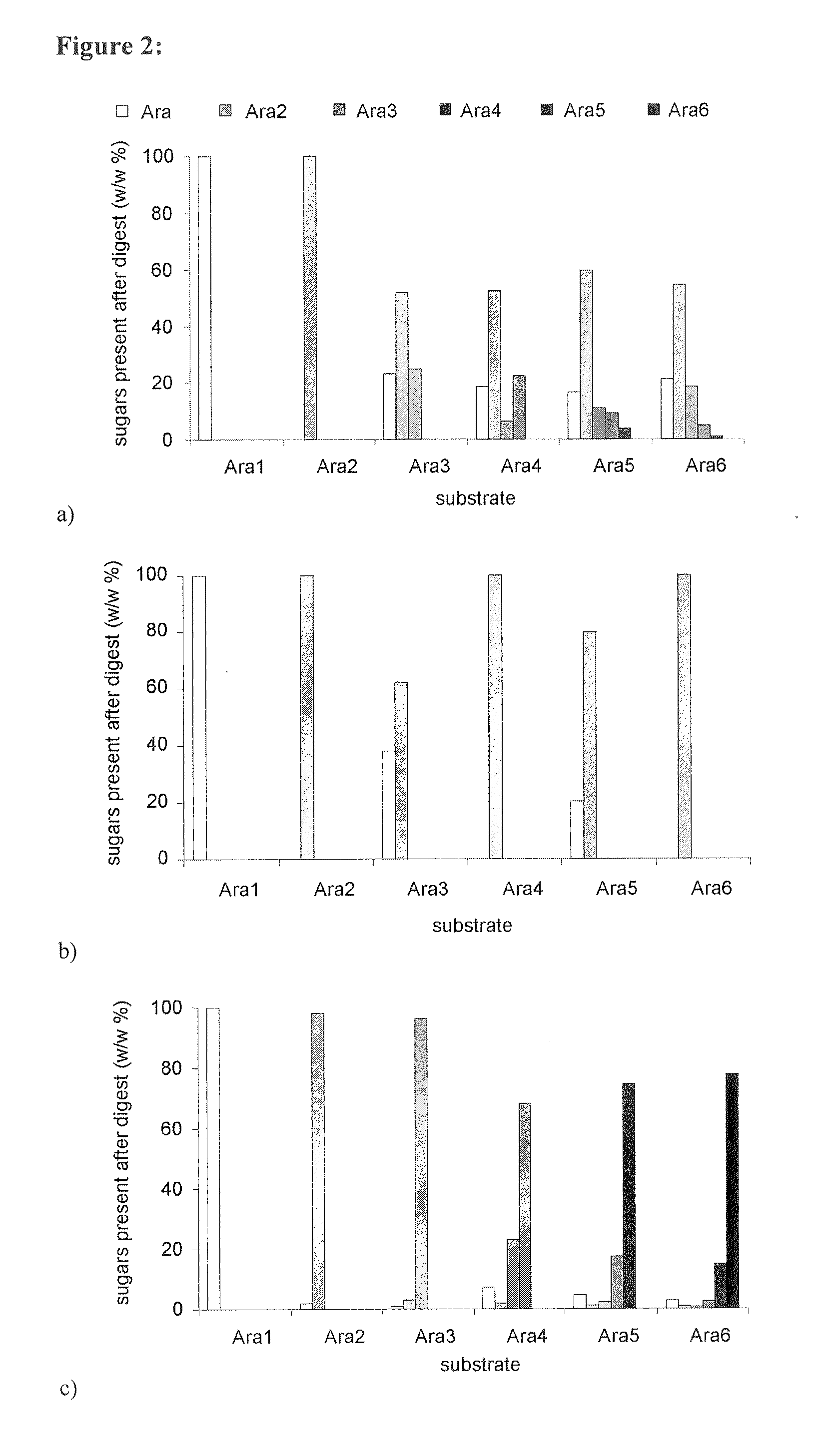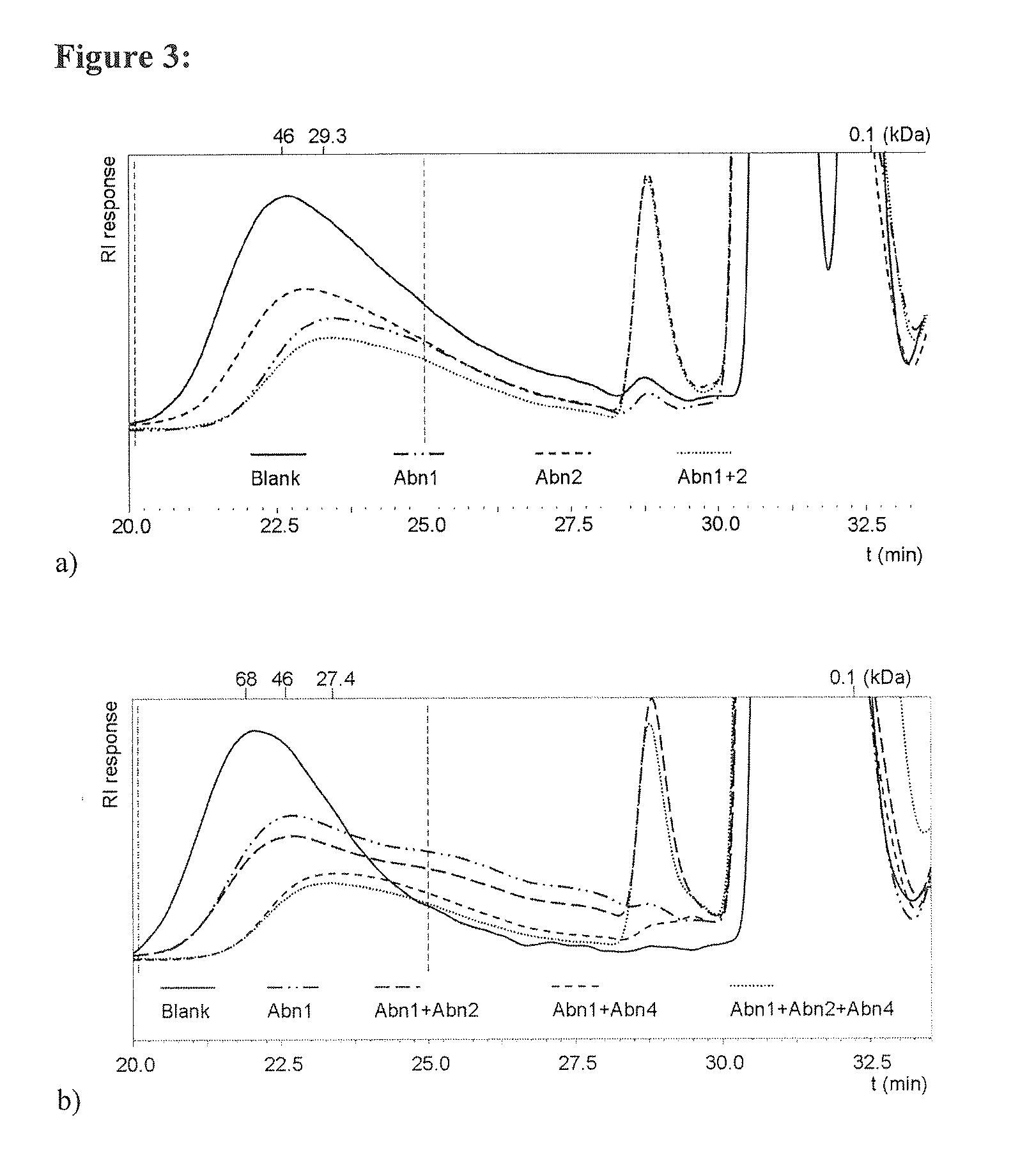Novel arabinohydrolases
a technology of arabinohydrolases and arabinohydrolases, which is applied in the field of new arabinohydrolases, can solve the problems of not leading to an efficient hydrolysis of arabinans, under-utilized enormous energy potential of these carbohydrates,
- Summary
- Abstract
- Description
- Claims
- Application Information
AI Technical Summary
Benefits of technology
Problems solved by technology
Method used
Image
Examples
example 1
Purification of Enzymes
[0217]Enzymes were purified from crude C1 fermentation liquids of homologous over-expressed enzymes in a C1 empty host strain W1L#100L (Accession No. CBS122190)
[0218]Abn1 has a theoretical molecular mass of 32 kDa. It has high sequence similarity with endoarabinanases from glycoside hydrolase (GH) family 43. Abn2, with a theoretical molecular mass of 40 kDa, shows homology with GH family 93 exoarabinanases. Abn4 has a theoretical molecular mass of 33 kDa and high levels of homology with GH43 arabinanases. Abf3 was purified and described to be an arabinoxylan arabinofuranohydrolase by Hinz et al. (2009) using hydrophobic interaction chromatography (HIC, SP Sepharose FF) and size exclusion chromatography (SEC, Superdex 200).
[0219]The purification required up to 3 chromatography steps with final recoveries up to 50% in activity. All purified fractions show a single dominant band on SDS-PAGE displaying the protein of interest (data not shown). The molecular masses...
example 2
Biochemical Characterization of Purified Arabinohydrolases
[0220]The arabinohydrolases described in the present invention have broad pH optima and stabilities and optimal temperatures of around 50° C. The temperature properties are similar to those reported for other arabinohydrolases. In contrast, the C1 arabinohydrolases act at a higher pH and in a broader range than most fungal arabinohydrolases. Interestingly, their pH optima are similar to those of most bacterial arabinohydrolases (Beldman et al., 1997; Saha, 2000). Considering the agreement between the pH optima of the arabinohydrolases and the pH optimum of typical yeasts, these data reveal that the C1 arabinohydrolases can be highly useful in the liquefaction of sugar beet pulp for bioethanol production.
[0221]pH and Temperature Optima
[0222]The pH optima determined for Abn1, Abn2 and Abn4 are illustrated in FIG. 1A. All enzymes are most active under slightly acidic conditions. Abn1 and Abn4 are most active between pH 5.0 and 6...
example 3
Enzyme Specificity Towards Natural Substrates: Actions on Arabinose Oligomers
[0229]The performance of the C1 arabinohydrolases was tested on linear arabinose oligomers ranging from DP 2-6. FIG. 2A shows that Abn1 degrades oligomers in the range from DP 3-6 and produces, on a weight basis, 50-60% arabinobiose and 20% arabinose monomers. At the end point of the digestion 25% of the oligomers remain present with DP≧3. Arabinotriose was the main product from arabinohexaose after 2 h (data not shown). This indicates an unspecific exo mode of action or an endo mode of action with preference for larger oligomers, as also described for Aspergillus niger endoarabinanase (Rombouts et al., 1988).
[0230]Abn2 is active on linear arabinose oligomers starting from arabinotriose (FIG. 2b). It splits off an arabinobiose unit from the trimer. Arabinotetraose and arabinohexaose are fully converted into arabinobiose. From arabinotriose and arabinopentaose arabinose monomers are left over after releasing...
PUM
| Property | Measurement | Unit |
|---|---|---|
| concentrations | aaaaa | aaaaa |
| concentrations | aaaaa | aaaaa |
| concentrations | aaaaa | aaaaa |
Abstract
Description
Claims
Application Information
 Login to View More
Login to View More - R&D
- Intellectual Property
- Life Sciences
- Materials
- Tech Scout
- Unparalleled Data Quality
- Higher Quality Content
- 60% Fewer Hallucinations
Browse by: Latest US Patents, China's latest patents, Technical Efficacy Thesaurus, Application Domain, Technology Topic, Popular Technical Reports.
© 2025 PatSnap. All rights reserved.Legal|Privacy policy|Modern Slavery Act Transparency Statement|Sitemap|About US| Contact US: help@patsnap.com



